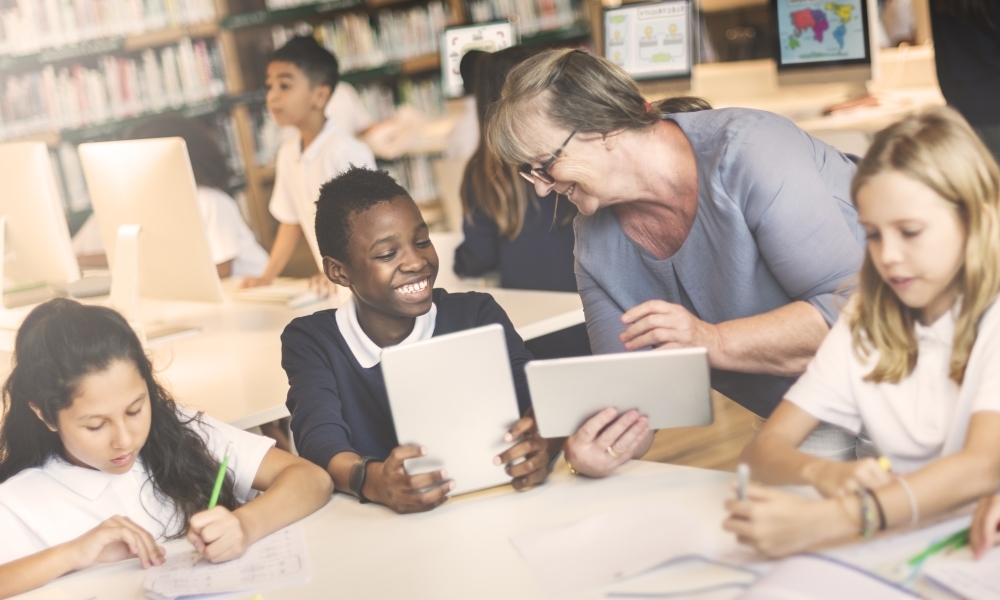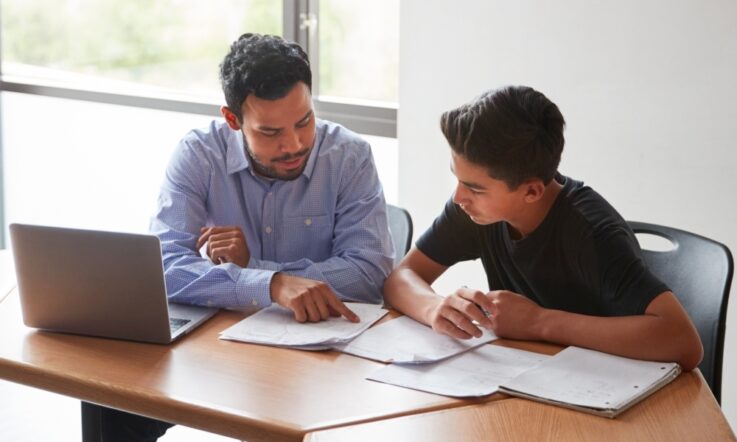In our three-part series on small group tutoring, we’ve discussed how to identify students who have fallen behind during the period of remote learning due to COVID-19, and why school leaders have a critical role in co-designing small group tutoring programs in their schools. The second article explored how to choose a tutor to best suit your students’ learning needs, the professional learning offered to tutors, and why a collaborative relationship between the classroom teacher and tutor teacher is critically important. In this final installment we discuss what effective small group tutoring looks like in practice, the importance of building relationships with students, and why students need to be at the centre of this work.
Schools are already actively engaged in a range of student improvement work, including small group tutoring, as they continue to adapt to the challenges presented by remote and flexible learning in 2020.
So, what does effective small group tutoring look like in practice? And how do classroom teachers and tutor teachers ensure that they’re meeting the needs of all students taking part?
According to Dr Julie Sonnemann from the Grattan Institute, the evidence is clear that small group tutoring works best when it’s intensive, regular, and delivered by a qualified teacher.
‘For example, three or four times a week, maybe somewhere between 30 to 50 minutes, and over a period of time of somewhere between 10 to 20 weeks. That’s when it has the most impact,’ she tells Teacher.
Another key factor in the success of any small group tutoring program is the relationship between the tutor teacher and the student.
‘One of the biggest reasons tutoring is seen to be successful is also because of that social relationship between the tutor and the student. If a student is struggling in the classroom, it’s important they have someone they can trust that will be there to help answer their questions in an environment where they may feel more comfortable than in a bigger class,’ Sonnemann says.
‘That can make a big difference, and so the tutor really does need to put the effort in to get to know the student, to understand how the student is feeling, what they feel confident in or not confident in, and really build the student up as well to be motivated to learn.’
Karen Money is principal of Melbourne Girls’ College in Victoria, and this year she’s been seconded to lead the Victorian Department of Education and Training’s Tutor learning initiative. She agrees that building relationships with students is critically important to the success of the program.
‘When I speak to my students and say “you’ve done so well, what was it that helped?” they say, “we loved our teacher and we didn’t want to let them down”. You can’t go past how important building that rapport and that relationship is to a young person going the extra mile and really changing what it is that they want to do next and engage with. It is so important,’ she says.
‘In a small group setting, that rapport is going to be even more obvious and so it’s really important that they feel comfortable and they trust that you’re not going to see any question as a question that’s beneath your response to answer, that it’s a really safe space for them to ask, and stretch and try anything.’
It’s also really important that student’s focus on growth and not just their raw achievement levels, Sonnemann says.
‘Having a tutor focus on getting the students to really think about setting their own learning goals, understanding where they’re at, and then how to get to the next step, is obviously really important. I think that involves a lot of metacognitive teaching strategies to build some of those skills up in students so that they can have the confidence to know where they’re going and why they’re going there in their learning.’
Student voice and agency
Empowering students to co-construct their own learning environments leads to increased levels of confidence, motivation, and self-efficacy, and strongly supports positive learning outcomes (Walker & Logan, 2008). This is why small group learning programs should prioritise student voice and agency to identify and target each student’s unique learning needs.
Sonnemann says the evidence on student voice shows that it’s critical that students have ownership of their own learning. ‘It’s really important for students that they have ownership in their learning and that they have some understanding of what they’re about to learn and why they’re about to learn it, and to be able to feel like they have ownership of that.
‘Obviously that’s something that’s going to be really important in a time when students didn’t have a lot of agency over their learning in lockdown. As with everyone, kids were thrown into this pandemic and there were a lot of things that were outside of their control, and so it’s important to start rebuilding some of those skills for kids who struggled.’
Social and emotional learning
Moving forward, classroom teachers and tutor teachers have to work to support students in their social and emotional learning by embedding it into daily routines, Sonnemann adds.
‘It’s just about the teacher regularly role modeling what it means to be a confident learner. That will mean the basics of setting learning intentions, steadily working towards them, unpacking if you aren’t making progress and why, and re-scoping your learning intentions if you need to, or extending them over a longer period of time.
‘So it’s really all that positive, metacognitive talk that happens in the classroom that’s so important. I think that just needs to be front and centre for teachers over 2021.’
References
Walker, L. & Logan, A. (2008). Learner engagement: a review of learner voice initiatives across the UK’s education sectors. Futurelab.
How do you work to build positive relationships with the students in your classroom? What impact does this have on their overall engagement and success in their learning?
Think about how you embed social and emotional learning into your daily routines in the classroom. Has this shifted or changed since the return to face-to-face teaching? Do you model what it means to be a confident learner?



